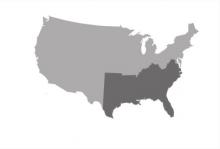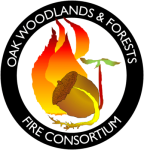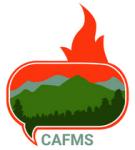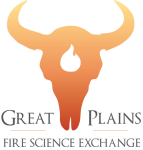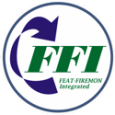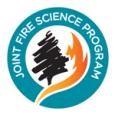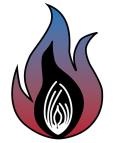The Encyclopedia of Southern Fire Science (ESFS) contains over 600 pages of peer-reviewed syntheses of scientific knowledge about fire science in the southern US.
The Southern Fire Portal (SFP) provides information about fire science and technology relevant to the southern United States. This 13 state area includes Alabama, Arkansas, Florida, Georgia, Kentucky, Louisiana, Mississippi, Oklahoma, North Carolina, South Carolina, Tennessee, Texas and Virginia, as well as Puerto Rico and the US Virgin Islands. Our goal is to provide "one-stop shopping" for resource managers, decision makers, scientists, students, and communities who want access to the results of efforts to understand and manage fire and fuels on lands in the southern United States.
The SFP was initially funded by the Joint Fire Science Program in 2003, with the objectives of providing a gateway for ongoing information and technology transfer between the fire management and research communities and their publics, and to improve fire science organization and accessibility by integrating and expanding two comprehensive and complementary sources of fire information: FRAMES and the Tall Timbers Research Station and Land Conservancy E.V. Komarek Fire Ecology Database.
SFP partners included: Tall Timbers Research Station and Land Conservancy, Forest Encyclopedia Network, The Nature Conservancy, National Biological Information Infrastructure (NBII), Joint Fire Science Program, Southern Region Extension Forestry, University of Idaho College of Natural Resources, USFS Southern Research Station, Southeast Fire Ecology Partnership.
Highlighted Content

Encyclopedia of Southern Fire Science (ESFS)
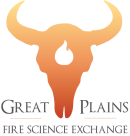
Great Plains Fire Science Exchange Literature Searches
The Great Plains Fire Science Exchange has partnered with FRAMES to provide literature searches on topics such as patch burn-grazing and pyric herbivory. Visit the Great Plains Fire Science Exchange Searches page to access these searches.
Tall Timbers Research Station and Land Conservancy E.V. Komarek Fire Ecology Database
The Tall Timbers Research Station and Land Conservancy maintains the E.V. Komarek Fire Ecology Database, which provides access to over 33,000 bibliographic citations.
